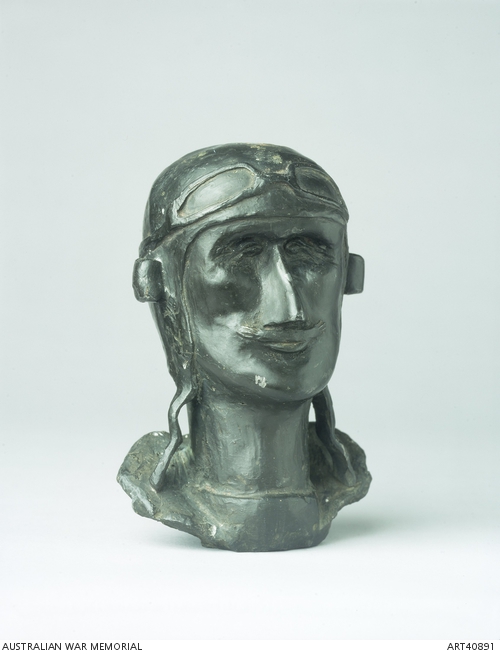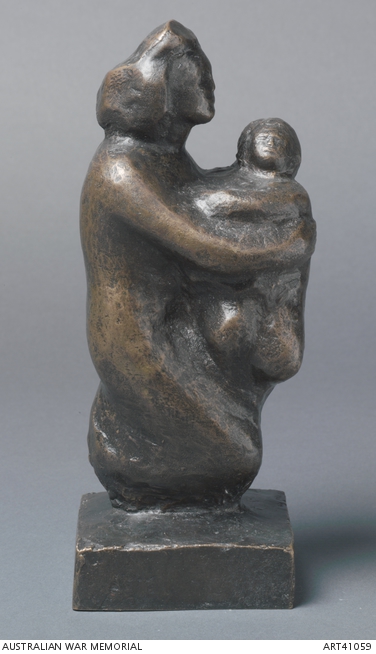Shaping Memory: Sculpture at the Australian War Memorial
- Shaping memory
- First World War
- Second World War
- Post-war responses
- Memorials
- Future directions
- Medallions
Post-war responses
After the end of the Second World War, the official war art scheme all but lapsed, and while a number of painters have since been appointed as official artists to cover specific conflicts, no sculptors have been appointed in this capacity in the last 50 years. However, the collection continued to grow through the acquisition of sculptures made independently in response to the Australian experience of war. These include expressive, personal works that often refer to the history of the commemorative monuments that preceded them, and which show a progression from the illustrative styles of the early 20th century. While no less part of that tradition, such works reflect the changing forms of sculpture and the corresponding changes in the social responses to war and commemoration.
The conventions of contemporary sculpture explore and challenge the idealism assumed in commemorative sculpture of the past, and seek to engage the viewer in new ways, using, for example, irony and distortion to make thought-provoking comments on the subject.
Hirschfeld Mack was a student at the Bauhaus and moved to London in 1936; he was interned there in 1940 and deported to Australia, where he was once again interned as an enemy alien.
Yes Sir! employs the modernist technique of direct carving, allowing the natural form of the material to suggest the shape and character of the final sculpture. It is carved into the wood without the aid of a pointing system or by means of a preliminary maquette, and reflects a sense of traditional European folk art craftsmanship. The sculpture captures the sense of humour and creativity displayed by the artists who found themselves interned as enemy aliens, caught in the midst of military life, governed by army officers and living in barracks.
Olive Bishop’s work belongs to a loosely defined Adelaide art movement of the 1970s, dubbed Skangaroovian Funk ceramics, which worked in an anti-art, anti-establishment style. Works were made for reasons that were neither functional nor aesthetic as artists broke established practices of pottery and craft to produce small, often garish, sculptures that were statements about society.
The Wash-and-War series came from the feeling of regimentation in the making and wearing of clothing, concluding in the mass regimentation of the war uniform. The faces on the medals have masks which depict the masking of reality. The uniform is a mass masking of the individual.
Gay Hawkes’s work, created out of twigs and pieces of found wood, parodies traditional equestrian military figures that suggest permanence and decorum. The technique accentuates her concern with the haste to go to war, and especially the First Gulf War.
With the Gulf figures the momentum impelling them across the desert is magnified when they are placed together Saddam is the important one as, although officially (and politically) the ENEMY he is running with the pack, not towards it and he is very VIVID. It is the broader issues which fascinate me the need for conflict and the eagerness of those who need to engage in it.
Karl Duldig left Austria in 1938, having trained under Secessionist artist Anton Hanak at the Vienna School of Applied Art, and at the Academy of Fine Arts. Living in Singapore with his wife and daughter in 1940, he was deported by the British to Australia and interned at Tatura camp in Victoria.
Even in the internment camp, Duldig practiced sculpture by carving eucalypt logs with an axe. After his release from Tatura internment camp, he worked for the army with the Eighth Employment Company. He produced carvings from large potatoes while working in the kitchen there, including Mother and child, one of three of these works that survived, having been cast into plaster made available to him by a sympathetic commander, Captain Edward Tip Broughton.








